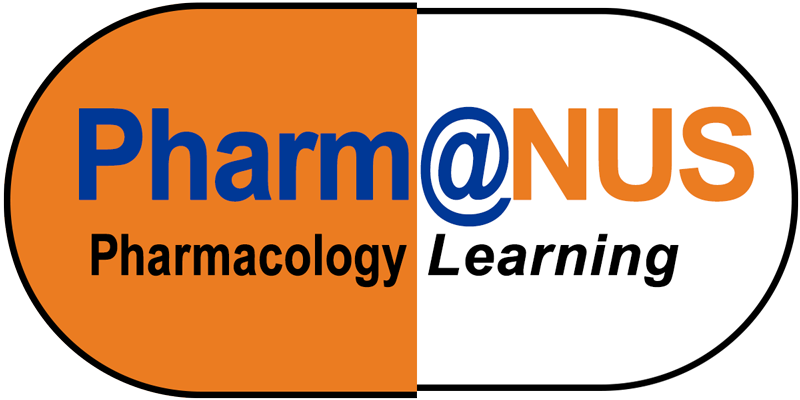Non-selective beta-blockers (e.g. timolol) and beta1-adrenoceptor selective beta-blockers (e.g. betaxolol) can reduce intraocular pressure in glaucoma. But I read online that the adrenoceptors in the ciliary body of the eye, which regulates aqueous humour production, are beta2-adrenoceptors. So why are beta2-adrenoceptor selective beta-blockers not used to treat glaucoma?
Glaucoma is a group of eye diseases associated with optic neuropathy and progressive loss of retinal ganglion cells resulting in visual field loss, and irreversible blindness if left untreated (Jacobs, 2019; Weinreb and Khaw, 2004). In some forms of glaucoma, intraocular pressure (IOP) is elevated and likely contributes to damage to the retinal ganglion cells and their axons exiting the eye via the optic nerve. Drugs that reduce IOP have helped to slow the progression of visual field loss in glaucoma.
We can use topical application of beta-blockers to reduce IOP (although topical prostaglandin F2alpha analogues are now usually the first-line choice for pharmacological reduction of IOP). Both non-selective beta-blockers (e.g. timolol) and beta1-adrenoceptor selective beta-blockers (e.g. betaxolol) can reduce IOP when applied topically to the eyes. They are thought to work by blocking beta-adrenoceptors in the ciliary body to reduce the production of aqueous humour and so reduce IOP.
Although beta1-adrenoceptor selective beta-blockers such as betaxolol work clinically to reduce IOP, the published literature suggests that the majority of beta-adrenoceptors in the human ciliary body are beta-2 adrenoceptors (Nathanson, 1981; Wax and Molinoff, 1987). However, the issue is complicated by the fact that many of the studies looking at the beta-adrenoceptor subtypes in the ciliary body are older papers that used pharmacological approaches dependent on the selectivity of the ligands used to classify the receptors. It would be interesting to see the expression and distribution of adrenoceptors in the eye re-evaluated with modern molecular pharmacology techniques.
The functional effects of beta2-adrenoceptors on IOP were also unclear. While non-selective beta-blockers and beta1-adrenoceptor-selective antagonists generally reduced IOP, beta2-adrenoceptor agonists also decreased IOP (e.g. Colasanti and Trotter, 1981; Coakes and Siah, 1984). Maybe beta2-adrenoceptors not only increase ciliary body production of aqueous humour but also increase uveoscleral drainage of aqueous humour. Studies were also made of the effects of beta-2 antagonists on IOP but produced mixed results with some reporting no effect on IOP and others reporting decreases in IOP. There are doubts over how selective the antagonists used were for beta2-adrenoceptors. However, one study reported that ICI 118551, which is still accepted as a relatively selective beta2-adrenoceptor inverse agonist (IUPHAR/BPS Guide to Pharmacology, 2019), reduces IOP in rabbits (Nathanson, 1984). Therefore, beta2-adrenoceptors likely do contribute to the regulation of ciliary body production of aqueous humour. There are also recent suggestions that polymorphisms in beta2-adrenoceptors might explain variations in IOP levels in untreated primary open-angle glaucoma patients (Gao et al., 2016) and that autoantibodies activating beta2-adrenoceptors may explain some cases of open-angle glaucoma (Jünemann et al., 2018).
Nevertheless, beta2-adrenoceptor selective beta-blockers have not been developed for clinical use. The primary reason has been a lack of interest due to concerns that beta2-adrenoceptor-selective antagonists would have adverse effects on lung function such as bronchoconstriction and increased risk of asthma attacks that would prevent clinical use. However, perhaps in the future, new beta2-adrenoceptor drugs with ligand-directed signalling bias (Baker et al., 2011) may be developed that are safe for lung function but still keep the ability to block beta2-adrenoceptor-mediated mechanisms of glaucoma.
References:
Baker JG, Hill SJ, Summers RJ. (2011) Evolution of β-blockers: from anti-anginal drugs to ligand-directed signaling. Trends Pharmacol Sci. 32(4-2): 227–234.
Coakes RL, Siah PB. (1984) Effects of adrenergic drugs on aqueous humour dynamics in the normal human eye. I. Salbutamol. Br J Ophthalmol. 68(6):393-7.
Colasanti BK, Trotter RR. (1981) Effects of selective beta 1- and beta 2-adrenoreceptor agonists and antagonists on intraocular pressure in the cat. Invest Ophthalmol Vis Sci. 20(1):69-76.
Gao Y, Li W, Yin Z, Ma Y, Cai H, Tang X. (2016) Association between Genetic Polymorphisms of the Beta Adrenergic Receptor and Diurnal Intraocular Pressure in Chinese Volunteers and Glaucoma Patients. Curr Eye Res. 41(12):1553-1560.
IUPHAR/BPS Guide to Pharmacology (2019) ICI 118551 https://www.guidetopharmacology.org/GRAC/LigandDisplayForward?tab=biology&ligandId=543 (Accessed on July 25, 2019).
Jacobs DS. (2019) Open-angle glaucoma: Epidemiology, clinical presentation, and diagnosis. Trobe, J. & Givens, J ed. UpToDate. Waltham, MA: UpToDate Inc. http://www.uptodate.com (Accessed on July 25, 2019).
Jünemann A, Hohberger B, Rech J, Sheriff A, Fu Q, Schlötzer-Schrehardt U, Voll RE, Bartel S, Kalbacher H, Hoebeke J, Rejdak R, Horn F, Wallukat G, Kunze R, Herrmann M. (2018) Agonistic Autoantibodies to the β2-Adrenergic Receptor Involved in the Pathogenesis of Open-Angle Glaucoma. Front Immunol. 9:145.
Nathanson JA. (1981) Human ciliary process adrenergic receptor: pharmacological characterization. Invest Ophthalmol Vis Sci. 1981 Dec;21(6):798-804.
Nathanson JA. (1984) ICI 118,551: an effective ocular hypotensive agent with selectivity for the ciliary process beta 2-adrenoceptor and with minimal cardiac side effects. Br J Pharmacol. 83(3):821-9.
O’Donnell SR, Walduck, K. (1981) How beta2-selective is the adrenoceptor antagonist drug, IPS 339? J Pharm Pharmacol. 33(4):223-5.
Wax MB, Molinoff PB. (1987) Distribution and properties of beta-adrenergic receptors in human iris-ciliary body. Invest Ophthalmol Vis Sci. 1987 Mar;28(3):420-30.
Weinreb RN, Khaw PT. (2004) Primary open-angle glaucoma. Lancet, 363 (9422):1711.

Leave a Reply